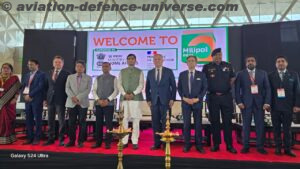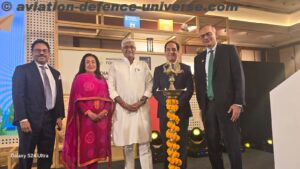
By Maj Gen (Dr.) Ashok Kumar, VSM (Retired)
New Delhi. 04 September 2022. LCC is an emerging and important concept. It is applicable across all sectors, be it in civil or in the defence forces. It is applicable not only to the imported equipments but also in the indigenous equipments. LCC also includes the running cost of the equipment which may be included if varies for equipments of different vendors. This article will examine the concept of LCC for the defence equipment procurement as to whether and to what extent, the LCC should be factored towards the procurement of the equipment. What are the advantages, if any, which will accrue over the current L1 based procurement model? It will be also examined as to how the cost calculation should take place to factor once model is adopted.
The operating conditions of defence forces not only vary from one service to another service but there is huge variations within the same service as well. For example, a gun having procured at a fixed cost will need to be employed in plains, semi developed, desert, mountainous or glaciated terrains that too in peace, no war no peace (NWNP) and war conditions. It may be quite difficult to configure a mathematical model which can be universally factored for all type of equipments or for varying conditions.
It is therefore essential that constituents of LCC be examined from the procurement perspective in the defenced forces. Important constituents are as under:
Basic Procurement Cost (Initial Cost)
This includes the cost of the main equipment, cost of auxiliary equipment and cost of mandatory warranty. It should also include the cost of munition where ever it is applicable. To make it objective, the RFP/ tender document should not only include the equipment specifications but also the duration of warranty, details of the auxiliary equipment and cost of ammunition. Cost of ammunition should be included only when the equipment requires a specific kind of munition as against a universally available and usable munition. If the cost comparison of munition is needed, No of articles must be specified in the RFP/tender document. It should be mandatory for the seller to include all these costs with clear cut breakdown for better understanding and evaluation even if entire LCC has to be considered mathematically. A weighted model could be included in the tender document to arrive at LCC value so that it can be a buyer advantage specially where inclusions have been made based on assessed requirement. For example, if warranty is asked for five years for all components of the product, it should be given a certain weighted percentage say 50 percent or so or as considered on case to case basis. Similarly, if munition is required to be added, the assessed figurer may not be realistic as it will include both peace and war time requirements. While peace time requirements can still be predicted with reasonable accuracy, the same may not hold true for war time requirements. It will be therefore more prudent if a weighted percentage is allocated and included in the RFP/ tender document accordingly.
Recurring cost in Life Span of Equipment
Invariably, this is one of the most important phase of the equipment life but remains obscured in the procurement process and therefore the utilisation of the equipment procured remains sub optimal. Invariably, the seller remains predominantly focussed on profit alone and therefore wants to maximise the same in the initial procurement cost. Though there are various sub components of this recurring cost but two main facts are as under:
MRO Cost
Maintenance, repair and overhaul (MRO) is required for each type of equipment, though in the varying measure. This costing, however remains a complex issue and cannot be realistically factored in No of cases. Be it Army, Navy or Air force, they have their own MRO set up to a reasonable extent which remains embedded at all locations, in all circumstances and in all terrains both during peace and war. While we are attempting to avoid the overlaps in our tri-services unified approach, sizeable component of this support will need to be maintained from organic resources and it is therefore essential that only that part of MRO cost be included in the LCC cost which has to be mandatorily to be provided by the seller. These may include cost of essential spares and overhaul where applicable besides major repairs while all other will be handled by integral repair echelons. Even this will need to be worked out differently for different type of equipment and based on mandatory dependence on the seller for this kind of support. It will be also a challenge to factor this for those equipments which have relatively longer life span as assembly lines needed for such MRO support may not be available till the end of equipment life for varying reasons which may include non-continuance of that product or its upgrades by the OEM or technological obsolescence of the product as the same is changing with unprecedented rate. Identification of inescapable part beyond the user’s capability will be critical and that will need to be built in the LCC model of costing. It is very important to include frequency of failure of major components with cost indication as it may turn out that some of the equipments appearing at low cost at initial procurement stage may turn out to be more costly over their life cycle duration.
Operational Cost
This may not be important if it is same for all the equipments under evaluation but it is not normally the case. A equipment operating at low cost fuel will be quite cheap as compared to the one requiring high cost fuel. The output is also important. Even if RFP and tender documents specify the minimum KPL (Km per Ltr), those giving higher KPL will be to user’s advantage. It is therefore very essential that all life time expenditures even on operational costs need to be factored.
Salvage Value
Whatever value can be retrieved after end of life also makes a difference. The equipments whose parts can be used as spares more efficiently can result in better value for the user and LCC may be brought down. Ease of disposal in consonance with environmental norms is also very important.
It therefore clearly emerges that present L1 model is misleading as expenditure to run the equipment in serviceable condition has not been realistically factored. An equipment appearing cheaper initially may turn out to be very costly in the long run. As against this, same equipment initially little costlier may turn out to be cheaper if LCC is calculated. Star rating in No of energy consuming equipment testify this hypothesis.
For LCC to succeed, data collation and mining is critical over the life span of the equipment accurately as only then the real picture of LCC will emerge. It is a must that formal structures be created for this data collation and LCC must commence initially from capital intensive equipment and thereafter spreading to entire domain of equipment. Since GFR exists for all government procurements, documents like DAP, DPP etc must exist only as guidelines. When we are sitting face to face on LAC with China, it is high time such proactive actions are taken on priority in national interest in general and Defence forces in particular.
(Maj Gen Ashok Kumar, VSM (Retd) is a Kargil war veteran and defence analyst. He is visiting fellow of CLAWS and specialises on neighbouring countries with special focus on China. The views in the article are solely the author’s. He can be contacted at editor.adu@gmail.com).
































































































































